Sharp CL19M10, 19L-M100, 19L-M100S, 20ML10 User Manual

19L-M100, CL19M10
19L-M100S, 20ML10
SERVICE MANUAL
S59G719L-M100
COLOR TELEVISION
Chassis No. SN-80
19L-M100, CL19M10 MODELS 19L-M100S, 20ML10
In the interests of user-safety (Required by safety regulations in some countries) the set should be restored to its original condition and only parts identical to those specified should be used.
CONTENTS |
|
|
Page |
» ELECTRICAL SPECIFICATIONS ......................................................................................................... |
1 |
» IMPORTANT SERVICE SAFETY PRECAUTION ................................................................................. |
2 |
» LOCATION OF USER'S CONTROL ..................................................................................................... |
6 |
» INSTALLATION AND SERVICE INSTRUCTIONS ................................................................................ |
7 |
» CHASSIS LAYOUT ............................................................................................................................ |
12 |
» BLOCK DIAGRAM ............................................................................................................................. |
13 |
» SCHEMATIC DIAGRAMS .................................................................................................................. |
14 |
» PRINTED WIRING BOARD ASSEMBLIES ........................................................................................ |
18 |
» REPLACEMENT PARTS LIST ........................................................................................................... |
23 |
» PACKING OF THE SET ..................................................................................................................... |
35 |
ELECTRICAL SPECIFICATIONS |
|
POWER INPUT ................................ |
|
120 V AC 60 Hz |
POWER RATING |
|
|
19L-M100 ....................................................... |
|
82 W |
19L-M100S, CL19M10, 20ML10 |
.................... 84 W |
|
PICTURE SIZE ....................... |
1,194cm2 (185sq inch) |
|
CONVERGENCE ........................................ |
|
Magnetic |
SWEEP DEFLECTION ................................ |
|
Magnetic |
FOCUS ........................... |
Hi-Bi-Potential Electrostatic |
|
INTERMEDIATE FREQUENCIES |
|
|
Picture IF Carrier Frequency ................. |
45.75 MHz |
|
Sound IF Carrier Frequency .................. |
41.25 MHz |
|
Color Sub-Carrier Frequency ................ |
42.17 MHz |
|
|
|
(Nominal) |
SHARP CORPORATION
AUDIO POWER |
|
|
OUTPUT RATING |
........... 0.9 W (at 10% distortion) |
|
SPEAKER |
|
|
SIZE .................................................. |
|
8 cm (Round) |
VOICE COIL IMPEDANCE ........... |
8 ohm at 400 Hz |
|
ANTENNA INPUT IMPEDANCE |
|
|
VHF/UHF ................................ |
|
75 ohm Unbalanced |
TUNING RANGES |
|
|
VHF-Channels .......................................... |
|
2 thru 13 |
UHF-Channels........................................ |
|
14 thru 69 |
CATV Channels ...................................... |
|
1 thru 125 |
|
(EIA, Channel Plan U.S.A.) |
|
Specifications are subject to change without prior notice.
This document has been published to be used for after sales service only.
1The contents are subject to change without notice.
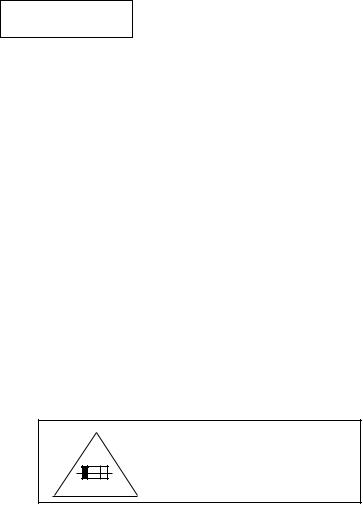
19L-M100, CL19M10
19L-M100S, 20ML10
IMPORTANT SERVICE SAFETY PRECAUTION
ËService work should be performed only by qualified service technicians who are thoroughly familiar with all safety checks and the servicing guidelines which follow:
WARNING
1.For continued safety, no modification of any circuit should be attempted.
2.Disconnect AC power before servicing.
3.Semiconductor heat sinks are potential shock hazards when the chassis is operating.
4.The chassis in this receiver has two ground systems which are separated by insulating material. The nonisolated (hot) ground system is for the B+ voltage regulator circuit and the horizontal output circuit. The isolated ground system is for the low B+ DC voltages and the secondary circuit of the high voltage transformer.
To prevent electrical shock use an isolation transformer between the line cord and power receptacle, when servicing this chassis.
CAUTION: FOR CONTINUED
PROTECTION AGAINST A
RISK OF FIRE, REPLACE
4A 125V
ONLY WITH SAME TYPE 4A125V FUSE.
SERVICING OF HIGH VOLTAGE SYSTEM AND PICTURE TUBE
When servicing the high voltage system, remove the static charge by connecting a 10k ohm resistor in series with an insulated wire (such as a test probe) between the picture tube ground and the anode lead. (AC line cord should be disconnected from AC outlet.)
1.Picture tube in this receiver employs integral implosion protection.
2.Replace with tube of the same type number for continued safety.
3.Do not lift picture tube by the neck.
4.Handle the picture tube only when wearing shatterproof goggles and after discharging the high voltage anode completely.
X-RADIATION AND HIGH VOLTAGE LIMITS
1.Be sure all service personnel are aware of the procedures and instructions covering X-radiation. The only potential source of X-ray in current solid state TV receivers is the picture tube. However, the picture tube does not emit measurable X-Ray radiation, if the high voltage is as specified in the "High Voltage Check" instructions.
It is only when high voltage is excessive that X- radiation is capable of penetrating the shell of the picture tube including the lead in the glass material. The important precaution is to keep the high voltage below the maximum level specified.
2.It is essential that servicemen have available at all times an accurate high voltage meter.
The calibration of this meter should be checked periodically.
3.High voltage should always be kept at the rated value -no higher. Operation at higher voltages may cause a failure of the picture tube or high voltage circuitry and;also, under certain conditions, may produce radiation in exceeding of desirable levels.
4.When the high voltage regulator is operating properly there is no possibility of an X-radiation problem. Every time a color chassis is serviced, the brightness should be tested while monitoring the high voltage with a meter to be certain that the high voltage does not exceed the specified value and that it is regulating correctly.
5.Do not use a picture tube other than that specified or make unrecommended circuit modifications to the high voltage circuitry.
6.When troubleshooting and taking test measurements on a receiver with excessive high voltage, avoid being unnecessarily close to the receiver.
Do not operate the receiver longer than is necessary to locate the cause of excessive voltage.
2
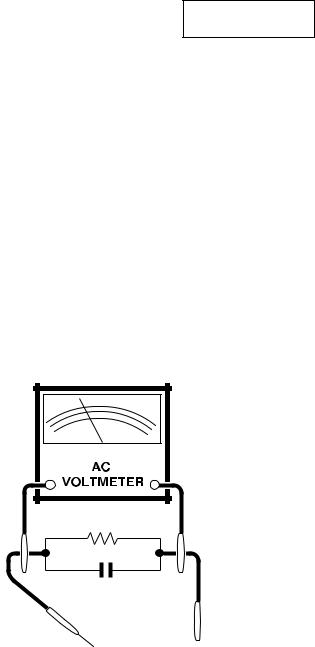
19L-M100, CL19M10
19L-M100S, 20ML10
IMPORTANT SERVICE SAFETY PRECAUTION
(Continued)
BEFORE RETURNING THE RECEIVER
(Fire & Shock Hazard)
Before returning the receiver to the user, perform the following safety checks.
1.Inspect all lead dress to make certain that leads are not pinched or that hardware is not lodged between the chassis and other metal parts in the receiver.
2.Inspect all protective devices such as non-metallic control knobs, insulating materials, cabinet backs, adjustment and compartment covers or shields, isolation resistor-capacity networks, mechanical insulators and etc.
3.To be sure that no shock hazard exists, check for leakage current in the following manner.
»Plug the AC cord directly into a 120 volt AC outlet, (Do not use an isolation transformer for this test).
»Using two clip leads, connect a 1.5k ohm, 10 watt resistor paralleled by a 0.15mF capacitor in series with all exposed metal cabinet parts and a known earth ground, such as electrical conduit or electrical ground connected to earth ground.
»Use an AC voltmeter having with 5000 ohm per volt, or higher, sensitivity to measure the AC voltage drop across the resistor.
»Connect the resistor connection to all exposed metal parts having a return to the chassis (antenna, metal cabinet, screw heads, knobs and control shafts, escutcheon and etc.) and measure the AC voltage drop across the resistor.
AII checks must be repeated with the AC ine cord plug connection reversed. (If necessary, a nonpolarized adapter plug must be used only for the purpose of completing these check.)
Any current measured must not exceed 0.5 milliamp. Any measurements not within the limits outlined above indicate of a potential shock hazard and corrective action must be taken before returning the instrument to the customer.
1.5k ohm |
10W |
0.15μF
TEST PROBE
TO EXPOSED |
CONNECT TO |
METAL PARTS |
KNOWN EARTH |
|
GROUND |
2345678901234567890123456789012123456789012345678901234567890121234567890123456789012345678901212
1234567890123456789012345678901212345678901234567890123456789012123456789012345678901234567890121 2
12345678901234567890123456789012123456789012345678901234567890121234567890123456789012345678901212
SAFETY NOTICE
Many electrical and mechanical parts in television receivers have special safety-related characteristics. These characteristics are often not evident from visual inspection, nor can protection afforded by them be necessarily increased by using replacement components rated for higher voltage, wattage and etc. Replacement parts which have these special safety characteristics are identified in this manual; electrical components having such features are identified by "å" and shaded areas in the Replacement Parts Lists and Schematic Diagrams.
For continued protection, replacement parts must be identical to those used in the original circuit. The use of substitute replacement parts which do not have the same safety characteristics as the factory recommended replacement parts shown in this service manual, may create shock, fire, X-radiation or other hazards.
12345678901234567890123456789012123456789012345678901234567890121234567890123456789012345678901212
1234567890123456789012345678901212345678901234567890123456789012123456789012345678901234567890121 2
12345678901234567890123456789012123456789012345678901234567890121234567890123456789012345678901212
3
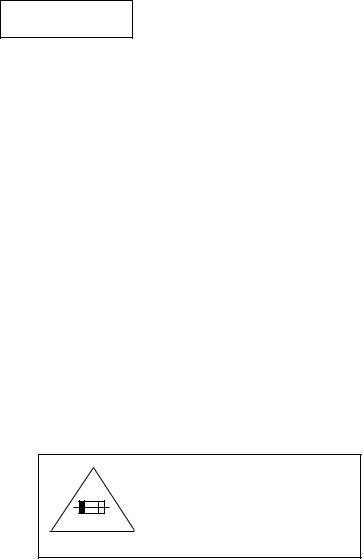
19L-M100, CL19M10
19L-M100S, 20ML10
PRECAUTIONS A PRENDRE LORS DE LA REPARATION
ËNe peut effectuer la réparation qu' un technicien spécialisé qui s'est parfaitement accoutumé à toute vérification de sécurité et aux conseils suivants.
AVERTISSEMENT
1.N'entreprendre aucune modification de tout circuit. C'est dangereux.
2.Débrancher le récepteur avant toute réparation.
3.Les déversoirs thermiques à semi-conducteurs peuvent présenter un danger de choc électrique lorsque le réceqteur est en marche.
4.Le châssis de ce récepteur possède deux systèmes de masse qui sont séparées par du matériel d'isolation. Le système de masse non-isolée (sous tension) est pour le circuit du régulateur de tension + B et le circuit de sortie horizontale. Le système de masse isolée est pour les tensions DC + B basses et le circuit secondaire du transformateur haute tension. Pour éviter tout risque d'électrocution lors de l'entretien de ce châssis, utiliser un transformateur d'isolation entre le cordon de ligne et la prise de courant.
PRECAUTION: POUR LA
PROTECTION CONTINUE
CONTRE LES RISQUES 4A 125V D'INCENDIE, REMPLACER LE FUSIBLE PAR UN FUSIBLE DE
MEME TYPE 4A-125V.
REPARATION DU SYSTEME A HAUTE TENSION ET DU TUBE-IMAGE
Lors de la réparation de ce systéme, supprimer la charge statique en branchant une résistance de 10 k Ω en série avec un fil isolé (comme une sonde d'essai) entre la mise à la terre du tube-image et le fil d'anodel. (Le corden d'alimentation doit être retiré de la prise murale.)
1.Le tube image dans ce récepteur emploie une protection intégrée contre l'implosion.
2.Par mesure de sécurité, changer le tube-image pour un tube du même numéro de type.
3.Ne pas lever le tube-image par son col.
4.Ne manipuler le tube-image qu'en porant des lunettes incassables et qu'après avoir déchargé totalement la haute tension.
LIMITES DES RADIATIONS X ET DE LA HAUTE TENSION
1.Tout le personnel réparateur doit être instruit des instructions et procédés relatifs aux radiations X. Le tube-image, seule source de rayons X dons les téleviseurs transistorisés, n'émet pourtant pas de rayons mesurables si la haute tension est maintenue à un niveau préconisé dans la section "Vérification de la haute tension".
C'est seulement quand la haute tension est excessive que les rayons X peuvent entrer dans l'enveloppe du tube-image y compris le conducteur de verre. Il est important de maintenir la haute tension endessous du niveau spécifié.
2.Il est essentiel que le réparateur ait sous la main un voltmètre à haute tension qui doit être périodiquement étalonné.
3.La haute tension doit toujours être maintenue à la valeur de régime -et pas plus haute. L'opération à des tensions plus élevées peut entraîner une panne du tube-image ou du circuit à haute tension et, dans certaines conditions, peut entraîner une radiation dépassant les niveaux préscrits.
4.Quand le régulateur à haute tension fonctionne correctement, il n'y a aucun problème de radiation X. Chaque fois qu'un châssis couleurs est réparé, la luminosité doit être examinée bout en contrôlant la haute tension à l'aide d'un voltmètre pour s'assurer que la haute tension ne dépasse pas la valeur spécifiée et qu'elle soit correctement réglée.
5.Ne pas utiliser un tube-image autre que celui spécifié et ne pas effectuer de modifications déconseillées du circuit à haute tension.
6.Lors de la recherche des pannes et des mesures d'essai sur un récepteur qui présente une haute tension excessive, éviter de s'approcher inutilement du récepteur.
Ne pas faire fonctionner le récepteur plus longtemps que nécessaire pour localiser la cause de la tension excessive.
4
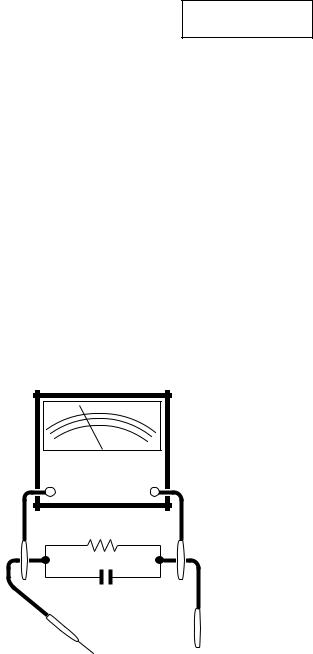
19L-M100, CL19M10
19L-M100S, 20ML10
PRECAUTIONS A PRENDRE LORS DE LA REPARATION
(Suite)
VERIFICATIONS CONTRE L'INCEN-DIE ET LE CHOC ELECTRIQUE
Avant de rendre le récepteur à l'utilisateur, effectuer les vérifications suivantes.
1.Inspecter tous les faisceaux de câbles pour s'assurer que les fils ne soient pas pincés ou qu'un outil ne soit pas placé entre le châssis et les autres pièces métalliques du récepteur.
2.Inspecter tous les dispositifs de protection comme les boutons de commande non-métalliques, les isolants, le dos du coffret, les couvercles ou blindages de réglage et de compartiment, les réseaux de résistance-capacité, les isolateurs mécaniques, etc.
3.S'assurer qu'il n'y ait pas de danger d'électrocution en vérifiant la fuite de courant, de la facon suivante:
»Brancher le cordon d'alimentation directem-ent à une prise de courant de 120V. (Ne pas utiliser de transformateur d'isolation pour cet essai).
»A l'aide de deux fils à pinces, brancher une résistance de 1,5 kΩ 10 watts en parallèle avec un condensateur de 0,15µF en série avec toutes les pièces métalliques exposées du coffret et une terre connue comme une conduite électrique ou une prise de terre branchée à la terre.
»Utiliser un voltmètre CA d'une sensibilité d'au moins 5000W/V pour mesurer la chute de tension en travers de la résistance.
»Toucher avec la sonde d'essai les pièces métalliques exposées qui présentent une voie de retour au châssis (antenne, coffret métallique, tête des vis, arbres de commande et des boutons, écusson, etc.) et mesurer la chute de tension CA en-travers de la résistance. Toutes les vérifications doivent être refaites après avoir inversé la fiche du cordon d'alimentation. (Si nécessaire, une prise d'adpatation non polarisée peut être utilisée dans le but de terminer ces vérifications.)
Tous les courants mesurés ne doivent pas dépasser 0,5 mA.
Dans le cas contraire, il y a une possibilité de choc électrique qui doit être supprimée avant de rendre le récepteur au client.
Voltmètre CA |
1.5k ohm |
10W |
0.15μF
SONDE D'ESSAI
AUX PIECES |
BRANCHER A UNE |
METALLIQUES |
TERRE CONNUE |
EXPOSEES |
|
12345678901234567890123456789012123456789012345678901234567890121234567890123456789012345678901212
1234567890123456789012345678901212345678901234567890123456789012123456789012345678901234567890121
2345678901234567890123456789012123456789012345678901234567890121234567890123456789012345678901212
AVIS POUR LA SECURITE
De nombreuses pièces, électriques et mécaniques, dans les téléviseurs présentent des caractéristiques spéciales relatives à la sécurité, qui ne sont souvent pas évidentes à vue. Le degré de protection ne peut pas être nécessairement augmentée en utilisant des pièces de remplacement étalonnées pour haute tension, puissance, etc.
Les pièces de remplacement qui présentent ces caractéristiques sont identifiées dans ce manuel; les pièces électriques qui présentent ces particularités sont
identifiées par la marque " å " et hachurées dans la liste des pièces de remplacement et les diagrammes schématiques.
Pour assurer la protection, ces pièces doivent être identiques à celles utilisées dans le circuit d'origine. L'utilisation de pièces qui n'ont pas les mêmes caractéristiques que les pièces recommandées par l'usine, indiquées dans ce manuel, peut provoquer des électrocutions, incendies, radiations X ou autres accidents.
12345678901234567890123456789012123456789012345678901234567890121234567890123456789012345678901212
1234567890123456789012345678901212345678901234567890123456789012123456789012345678901234567890121
5
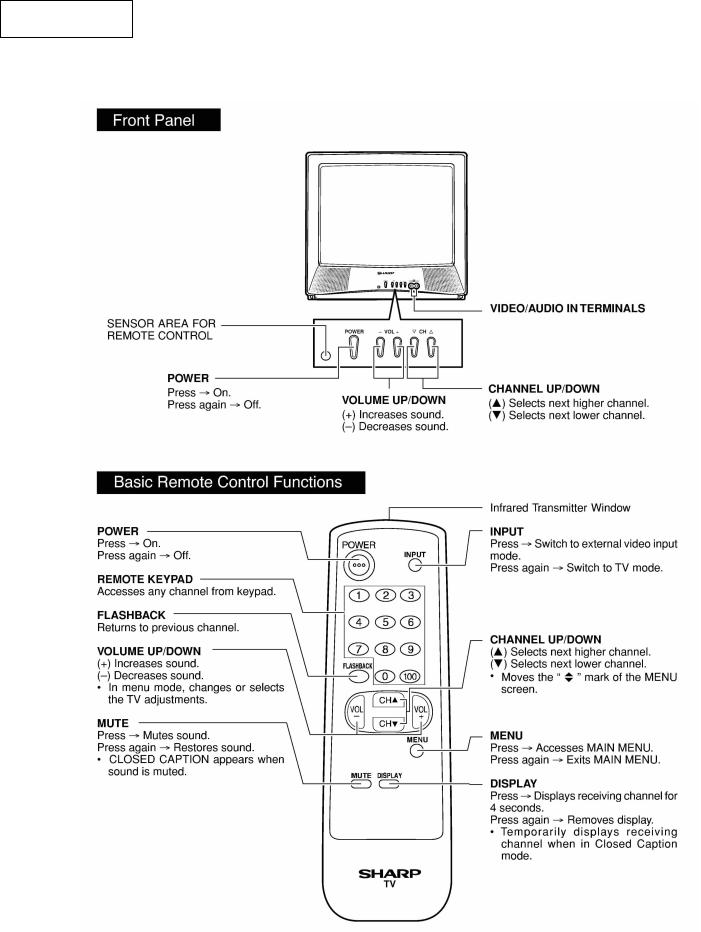
19L-M100, CL19M10
19L-M100S, 20ML10
LOCATION OF USER'S CONTROL
6

19L-M100, CL19M10
19L-M100S, 20ML10
INSTALLATION AND SERVICE INSTRUCTIONS
Note: (1) When performing any adjustments to resistor controls and transformers use non-metallic screwdrivers or TV alignment tools.
(2) Before performing adjustments, the TV set must be on at least 15 minutes.
CIRCUIT PROTECTION
The receiver is protected by a 4.0A fuse (F701), mounted on PWB-A, wired into one side of the AC line input.
X-RADIATION PROTECTOR CIRCUIT TEST
After service has been performed on the horizontal deflection system, high voltage system, +B system, test the X-Radiation protection circuit to ascertain proper operation as follows:
1)Apply 120V AC using a variac transformer for accurate input voltage.
2)Allow for warm up and adjust all customer controls for normal picture and sound.
3)Receive a good local channel.
4)Connect a digital voltmeter to TP653 and make sure that the voltmeter reads 21.3 ±1.5 V.
5)Apply external 28.9V DC at TP653 by using an external DC supply, TV must be shut off.
6)To reset the protector, unplug the AC cord and make a short circuit between TP651 and TP652. Now make sure that normal picture appears on the screen.
7)If the operation of the horizontal oscillator does not stop in step 5, the circuit must be repaired before the set is returned to the customer.
HIGH VOLTAGE CHECK
High voltage is not adjustable but must be checked to verify that the receiver is operating within safe and efficient design limitations as specified checks should be as follows:
1.Connect an accurate high voltage meter between ground and anode of picture tube.
2.Operate receiver for at least 15 minutes at 120V AC line voltage, with a strong air signal or a properly tuned in test signal.
3.Enter the service mode and select the service adjustment "S19" and Bus data "01" (Y-mute on).
4.The voltage should be approximately, 26.0kV (at zero beam).
If a correct reading cannot be obtained, check circuitry for malfunctioning components. After the voltage test, make Y-mute off to the normal mode.
7

19L-M100, CL19M10
19L-M100S, 20ML10
For adjustments of this model, the bus data is converted to various analog signals by the D/A converter circuit.
Note: There are still a few analog adjustments in this series such as focus and master screen voltage. Follow the steps below whenever the service adjustment is required. See "Table-B" to determine, if service adjustments are required.
1. Service mode
Before putting unit into the service mode, check that customer adjustments are in the normal mode. Use the reset function in the video adjustment menu to ensure customer controls are in their proper (reset) position.
2. Service number selection
Once in the service mode, press the Ch-up or Chdown button on the remote controller or at the set. The service adjustment number will vary in increments of one, from "S01" to "OP". Select the item you wish to adjust.
To enter the service mode and exit service mode.
While pressing the Vol-up and Ch-up buttons at the sametime, plug the AC cord into a wall socket.
Now the TV set is switched on and enters the service mode.
To exit the service mode, turn the television off by pressing the power button.
3. Data number selection
Press the Vol-up or down button to adjust the data number.
DATA NUMBER |
|
CHANNEL |
||
|
||||
SERVICE ADJUSTMENT NUMBER |
|
|
|
|
|
|
|
|
|
|
|
|
|
|
|
|
|
|
|
S01 55(085) 02
S01 D:00
Figure A.
8
|
|
|
|
|
19L-M100, CL19M10 |
|
|
|
|
|
|
19L-M100S, 20ML10 |
|
|
|
|
|
|
|
|
SERVICE |
ADJUSTMENT ITEM |
DATA |
|
ADJUSTMENT CONTENTS |
|
|
NUMBER |
INITIAL VALUE |
RANGE |
|
|||
|
|
|
|
|||
|
|
|
|
|
||
|
|
|
|
|
|
|
S01 |
PICTURE |
55 |
00-7F |
|
|
|
S02 |
TINT |
46 |
00-7F |
|
|
|
S03 |
COLOR |
32 |
00-7F |
|
|
|
S04 |
BRIGHTNESS |
40 |
00-7F |
|
|
|
S05 |
SHARPNESS |
28 |
00-3F |
Must be set to "24" |
|
|
S06 |
VERTICAL PHASE |
00 |
00-07 |
Must be set to "00" ~ "03" |
|
|
S07 |
HORIZONTAL PHASE |
12 |
00-1F |
|
|
|
S08 |
RF-AGC |
23 |
00-3F |
|
|
|
S09 |
VERTICAL AMP |
20 |
00-3F |
|
|
|
S10 |
VCO |
2C |
00-7F |
|
|
|
S11 |
R CUT-OFF |
00 |
00-FF |
|
|
|
S12 |
G CUT -OFF |
00 |
00-FF |
|
|
|
S13 |
B CUT-OFF |
00 |
00-FF |
|
|
|
S14 |
G GAIN |
7F |
00-FF |
|
|
|
S15 |
B GAIN |
7F |
00-FF |
|
|
|
S16 |
TRAP(3.58MHz) |
00 |
00 or 01 |
Must be set to "00" |
|
|
S17 |
BALANCE |
20 |
00-3F |
Must be set to "20" |
|
|
S18 |
C.C.POSITION |
17 |
00-7F |
|
|
|
S19 |
Y-MUTE |
00 |
00,01,03 |
"00" = NORMAL, "01" = No Y, "03" = No VERTICAL |
|
|
S20 |
ENERGY SAVE OFFSET |
20 |
00-3F |
Must be set to "23" |
|
|
S21 |
D.D.E. OFFSET |
03 |
00-1F |
Must be set to "03" |
|
|
S22 |
OSD SETUP |
00 |
00-03 |
Must be set to "00" |
|
|
S23 |
TUNER SETUP |
00 |
00-01 |
Must be set to "00" |
|
|
OP |
OPTION |
30 |
00-FF |
Must be set to "02" |
|
|
|
|
|
|
|
|
|
Table - A
Holding down both the CH-up/down buttons on the TV set at service mode for more than 2 seconds will automatically write the above initial values into IC2101.
PART REPLACED |
ADJUSTMENT |
NOTES |
||
|
|
|||
NECESSARY |
UNNECESSARY |
|||
|
|
|||
|
|
|
|
|
IC2001 |
|
X |
Data is stored in IC2101. |
|
|
|
|
|
|
|
X |
|
The adjustment is needed to compensate for characteristics |
|
IC201 |
|
of parts including IC201. |
||
|
|
|
|
|
|
|
|
Holding down both the CH-up/down buttons on the TV set in |
|
IC2101 |
X |
|
the service mode for more than 2 seconds will automatically |
|
|
write the above initial values into IC2101. |
|||
|
|
|
||
|
|
|
|
|
CRT |
X |
|
Adjust items related to picture tube only. |
|
|
|
|
|
|
Table - B
9

19L-M100, CL19M10
19L-M100S, 20ML10
ËSERVICE ADJUSTMENT
VCO Adjustment
1.Connect a digital voltmeter between pin (44) of IC201 and ground.
2.Receive a good local channel.
3.Enter the service mode and select the service adjustment "S10".
4.Adjust the data so that digital voltmeter reads 2.2V.
5.Adjustment is completed, remove the voltmeter, return to "normal" mode.
RF AGC Adjustment
1.Receive a good local channel.
2.Enter the service mode and select the service adjustment "S08".
3.Set the data value to point where no noise or beat appears.
4.Select another channel to confirm that no noise or beat appears.
Note 1: You will have to come out of the service mode to select another channel.
Note 2: Setting the data to "00" will produce a black raster.
Screen Adjustment
1.Connect a digital voltmeter between TP852 and TP853 on the CRT Unit.
Note: These test points may not be provided. Then connect the voltmeter to both ends of R852 located near Q852 on the foil side.
2.Receive a good local channel.
3.Enter the service mode and select the service adjustment "S03" and set the data value to "00" to set the color level to minimum. (Record original data code under adjustment "S03" before changing) You may skip this step, if you selected a B/W picture or monoscope pattern.
4.Select the service adjustment "S19" and adjust the data value to "01", this turn off the luminance signal (Y-mute).
5.Select the service adjustment "S04" and adjust data value to obtain 0.17 volts on the digital voltmeter.
6.Adjust the master screen cotrol until the raster darkens to the point where raster is barely seen.
7.Adjust the service adjustments "S11" red, "S12" green and "S13" blue to obtain a good grey scale with normal whites at low brightness level.
8.Select the service adjustment "S19" and reset data to "00". Select the service adjustment "S03" and reset data to obtain normal color level.
9.Remove digital voltmeter, and reset the master screen control to obtain normal brightness range.
White Balance Adjustment
1.Receive a good local channel.
2.Enter the service mode and select the service adjustment "S03" and set to "00" (minimum color)(Record original data code under adjustment "S03" before changing). "S03" does not have to be adjusted, if you selected a B/W picture or monoscope pattern.
3.Alternately adjust the service adjustment data of "S14" and "S15" until a good grey scale with normal whites is obtained.
4.Select the service adjustment "S03" and adjust data to obtain normal color level.
Sub-Picture Adjustment
1.Receive a good local channel.
2.Make sure the customer picture control is set to maximum.
3.Enter the service mode and select the service adjustment "S01".
4.Adjust the data value to achieve normal contrast range.
Sub-Tint Adjustment
1.Receive a good local channel.
2.Set customer tint control to center of it's range.
3.Enter the service mode and select the service adjustment "S02".
4.Adjust "S02" data value to obtain normal flesh tones.
Sub-Color Adjustment
1.Receive a good local channel.
2.Make sure the customer color control is set to center position .
3.Enter the service mode and select service adjustment "S03".
4.Adjust "S03" data value to obtain normal color level.
10
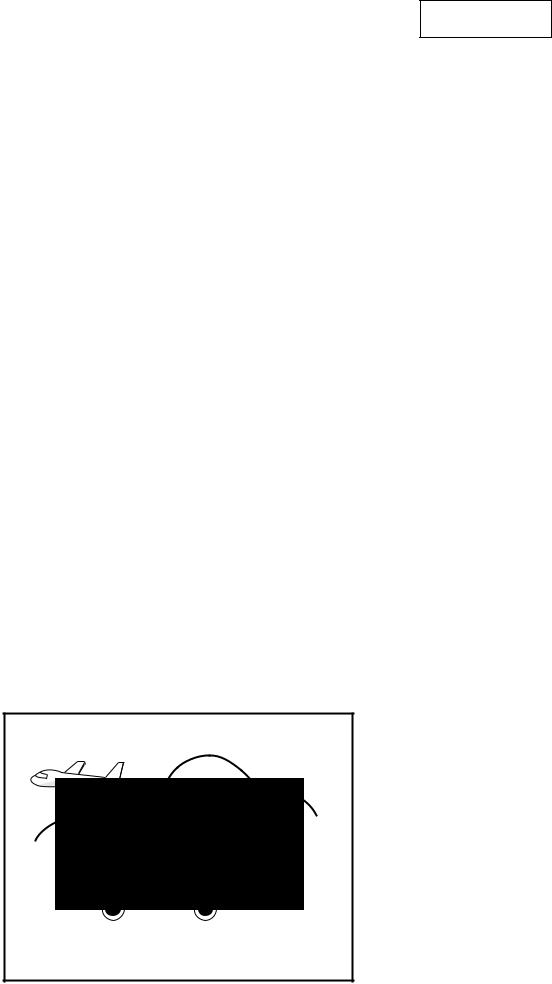
Sub-Brightness Adjustment
1.Receive a good local channel.
2.Make sure the customer brightness control is set to center position.
3.Enter the service mode and select the service adjustment "S04".
4.Adjust "S04" data value to obtain normal brightness level.
Vertical-Size Adjustment
1.Receive a good local channel.
2.Enter the service mode and select the service adjustment "S09".
3.While observing the top and bottom of the screen, adjust "S09" data value to proper vertical size.
Vertical Phase Adjustment
1.Enter the service mode and select the service adjustment "S06".
2.Adjust data value to "00" ~ "03".
Note: This must be set "00" ~ "03" when changed data retrace line will appear.
Horizontal Position Adjustment
1.Have unit receive a good local channel.
2.Enter the service mode and select the service adjustment "S07".
3.Adjust "S07" data value so that picture is centered.
Caption Position Adjustment (Horizontal)
1.Receive a good local channel.
2.Enter the service mode and select the service adjustment "S18".
3.A black text box appears on the screen. (see Figure B. below)
4.Adjust "S18" data value so that text box is positioned in the center of the screen.
19L-M100, CL19M10
19L-M100S, 20ML10
3.58MHz Trap Adjustment
1.Receive a good local channel.
2.Enter the service mode and select the service adjustment "S16".
3.This is a two position adjustment, "00" is ON, "01" is OFF.
4.Adjust data value to "00" for normal viewing.
Sharpness, Audio Balance, Energy Save
Offset, DDE Offset, OSD Setup, Tuner
Setup and Option Adjustments
1.Receive a good local channel.
2.Enter the service mode and select the service adjustments "S05" for sharpness, "S17" for balance, "S20" for energy save offset, "S21" for DDE offset, "S22" for OSD setup, "S23" for tuner and "OP" for option.
» Sharpness Adjustment
3.Adjust data value to "24" (center of data range) for sharpness adjustment.
» Audio Balance Adjustment
4.Adjust data value to "20" (center of data range) for audio balance adjustment.
»Energy Save Offset Adjustment
5. Adjust data value to "23".
»DDE Offset Adjustment
6.Adjust data value to "03".
» OSD Setup Adjustment
7.Adjust data value to "00".
»Tuner Setup Adjustment
8.Adjust data value to "00".
» Option Adjustment
9.Adjust data value to "02".
Figure B.
11
